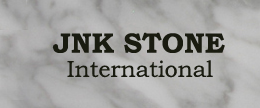To maintain a slate floor, it should be kept clean like any other floor, scrubbing as necessary and mopping between times.
To scrub a cleft floor, use a strong solution of floor detergent. Spread it over the surface and let it stand for several minutes. Then, with fresh solution, scrub with a stiff brush. Abrasive powders are less desirable as they sometimes leave residue.
After the slate has been thoroughly cleaned, rinsed and allowed to completely dry, it will benefit from the application of a protective treatment. The word "protective" is not to imply that the slate needs protection, but that a sealer will allow it to be cleaned easier in the future.
Sealers
Slate, supplied in the standard "natural cleft" finish should be sealed. The sealer best adapted for slate should be of low viscosity and less than 25% in solids. Care should be taken to assure that the slate as well as the grout joints are totally dry and the floor clean prior to application. Dampness in the joints can cause treatments to turn white. Most all sealers are a permanent treatment and are very difficult to remove. A sample piece or small area should be treated first to assure that this is the desired end finish.
Traffic Patterns
Most heavy use areas will eventually develop "traffic patterns". It may appear that the slate is wearing, but more often than not it is the finish. Sealers are relatively permanent, and a record of the finish and manufacturer should be kept as some sealers are not compatible with others.
Stone is a natural product and simple care and maintenance will keep it looking beautiful. Many common foods and drinks contain acids that will etch or dull the stone surface; clean spills immediately.
Dust mop interior floors frequently using a clean non-treated dry dust mop. Sand, dirt and grit do the most damage to natural stone surfaces due to their abrasiveness. Mats or area rugs inside and outside an entrance will help to minimize the sand, dirt and grit that will scratch the stone floor. Be sure that the underside of the mat or rug is a non-slip surface. Normally, it will take a person about eight steps on a floor surface to remove sand or dirt from the bottom of their shoes. Do not use vacuum cleaners that are worn. The metal or plastic attachments or the wheels may scratch the surface.
Clean stone surfaces with a few drops of neutral cleaner, or a mild liquid dishwashing detergent and warm water. Use a clean rag mop on floors and a soft cloth for other surfaces for best results. Too much cleaner or soap may leave a film and cause streaks. Rinse the surface thoroughly after washing with the soap solution and dry with a soft cloth. Change the rinse water frequently. Do not use scouring powders or creams; these products contain abrasives that may scratch the surface.
In the bath or other wet areas, soap scum can be minimized by using a squeegee after each use. To remove soap scum, use a non-acidic soap scum remover or a solution of ammonia and water (about ½ cup ammonia to a gallon of water).
Do's and Don'ts
Do dust mop floors frequently.
Do clean surfaces with mild detergent or stone soap.
Do thoroughly rinse and dry the surface after washing.
Do blot up spills immediately.
Do protect floor surfaces with non-slip mats or area rugs and countertop surfaces with coasters, trivets or placemats.
Don't use vinegar, lemon juice or other cleaners containing acids on marble, limestone, travertine or onyx surfaces.
Don't use cleaners that contain acid such as bathroom cleaners, grout cleaners or tub & tile cleaners.
Don't use abrasive cleaners such as dry cleansers or soft cleansers.
Don't mix bleach and ammonia; this combination creates a toxic and lethal gas.

